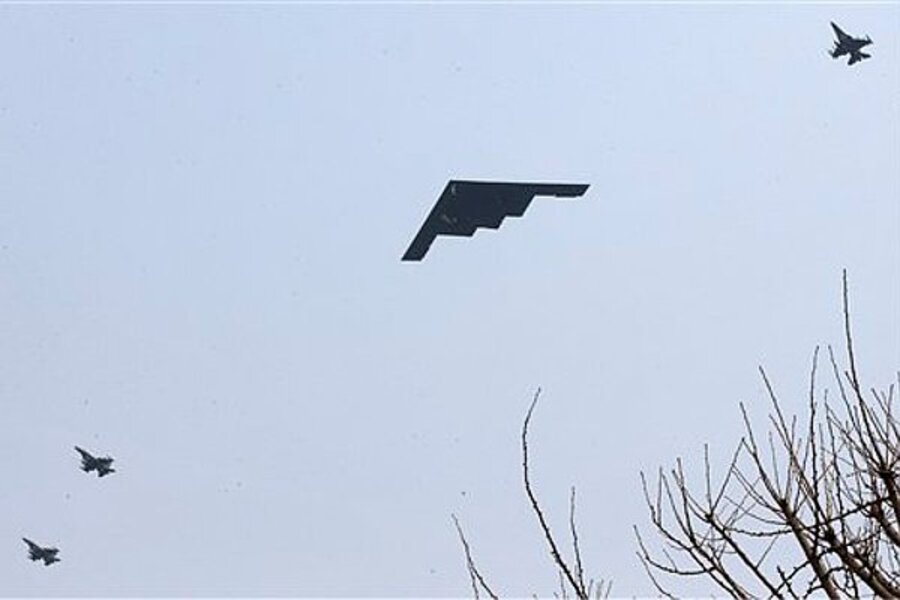B-2 bombers not intended to provoke North Korea, says Hagel
Loading...
| WASHINGTON
The unprecedented U.S. decision to send nuclear-capable B-2 stealth bombers to drop dummy munitions during military drills with South Korea this week was part of normal exercises and not intended to provoke a reaction from North Korea, Defense Secretary Chuck Hagel said.
Hagel acknowledged, however, that North Korea's belligerent tones and actions in recent weeks have increased the danger in the region, "and we have to understand that reality."
North Korea's leader said Thursday his rocket forces are ready "to settle accounts with the U.S." in response to the B-2 bombers. State media said Kim Jong Un ordered rockets on standby to strike the U.S. mainland, South Korea, Guam and Hawaii.
Speaking to reporters earlier, both Hagel and Gen. Martin Dempsey, chairman of the Joint Chiefs of Staff, said the B-2 bombers were a message intended more for allies than Pyongyang.
"The North Koreans have to understand that what they're doing is very dangerous," Hagel said. "I don't think we're doing anything extraordinary or provocative or out of the ... orbit of what nations do to protect their own interests." The U.S., he added, must make it clear to South Korea, Japan and other allies in the region that "these provocations by the North are taken by us very seriously, and we'll respond to that."
U.S. Forces Korea announced in a statement Thursday that two B-2 stealth bombers flew from an air base in the U.S. and dropped dummy munitions on a South Korean island range before returning home. The Pentagon said this was the first time dummy munitions had been dropped over South Korea, but late Thursday it was unclear whether there ever had been any B-2 flights there.
The joint drills are likely to heighten the escalating tensions between the U.S. and North Korea in recent weeks, including Pyongyang's threat to carry out nuclear strikes on Washington and Seoul. North Korea also is angry at new U.N. sanctions over its latest nuclear test last month.
Asked if the U.S. has seen North Korea take any actual threatening military steps in response to the bombers, Dempsey said the North has moved some artillery units across the demilitarized zone from Seoul and some maritime units along the coasts. But so far, he said, "We haven't seen anything that would cause us to believe they are movements other than consistent with historic patterns and training exercises."
The military drills are only the latest U.S. response to what officials see as a growing North Korean threat. The Pentagon is also planning to strengthen its defenses against a potential North Korean missile attack on the U.S.
Hagel announced earlier this month that over the coming four years the Pentagon will add 14 missile interceptors to the 26 it already has in place at a base in Alaska, at an estimated cost of $1 billion.
Hagel said there are a lot of "unknowns" with North Korea and its new president Kim. "But we have to take seriously every provocative, bellicose word and action that this new, young leader has taken so far since he's come to power," he said.
Experts say a full-blown North Korean attack is not likely. But there are persistent worries about a more localized conflict, such as artillery attacks or a naval skirmish in the disputed Yellow Sea waters. There have been three naval clashes since 1999.
"You may see some shelling of South Korean islands that are very close to the North Korean coast. They've done that in the past, they killed four people the last time they did this. That could happen again," said retired Air Force Col. Cedric Leighton, a North Korean intelligence expert who served on the Joint Staff and the National Security Council.
Associated Press writer Lolita C. Baldor and AP Broadcast writer Sagar Meghani contributed to this report.





